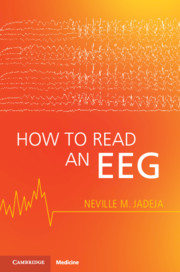Book contents
- How to Read an EEG
- How to Read an EEG
- Copyright page
- Dedication
- Contents
- Figure Contributions
- Foreword
- Preface
- How to Read This Book
- Part I Basics
- Part II Interpretation
- Part III Specific Conditions
- Chapter 18 Common Seizure Mimics
- Chapter 19 Seizures
- Chapter 20 Epilepsies
- Chapter 21 Epilepsy Syndromes
- Chapter 22 Focal Dysfunction (Lesions)
- Chapter 23 Global Dysfunction (Encephalopathy)
- Chapter 24 Status Epilepticus
- Chapter 25 Post Cardiac Arrest
- Chapter 26 Brain Death
- Appendix How to Write a Report
- Index
- References
Chapter 25 - Post Cardiac Arrest
from Part III - Specific Conditions
Published online by Cambridge University Press: 24 June 2021
- How to Read an EEG
- How to Read an EEG
- Copyright page
- Dedication
- Contents
- Figure Contributions
- Foreword
- Preface
- How to Read This Book
- Part I Basics
- Part II Interpretation
- Part III Specific Conditions
- Chapter 18 Common Seizure Mimics
- Chapter 19 Seizures
- Chapter 20 Epilepsies
- Chapter 21 Epilepsy Syndromes
- Chapter 22 Focal Dysfunction (Lesions)
- Chapter 23 Global Dysfunction (Encephalopathy)
- Chapter 24 Status Epilepticus
- Chapter 25 Post Cardiac Arrest
- Chapter 26 Brain Death
- Appendix How to Write a Report
- Index
- References
Summary
EEG is useful to make prognostic estimations and evaluate for nonconvulsive seizures post cardiac arrest. Unfavorable EEG patterns portend poor outcomes, whereas early improvements including restoration of physiological rhythms are associated with better outcomes. The EEG has limitations; it should not be used in isolation to make prognostic estimations. Highly malignant EEG patterns are specifically associated with poor outcomes. Individual malignant patterns have low sensitivity and specificity for poor outcomes. Benign patterns (absence of malignant features) suggest favorable outcomes. Seizures and status epilepticus are common post cardiac arrest and may contribute to poor outcomes. Myoclonic status epilepticus is characterized by prolonged cortical myoclonus. Early myoclonic status epilepticus post cardiac arrest is typically associated with poor prognosis.
Keywords
- Type
- Chapter
- Information
- How to Read an EEG , pp. 239 - 245Publisher: Cambridge University PressPrint publication year: 2021

